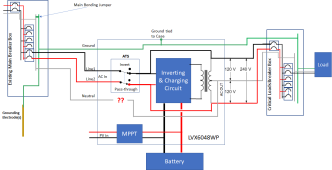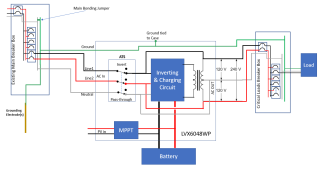A couple of important points:
1) All of these low-cost AIO inverters do a bad job of describing the grounding and bonding of the unit but Growatt has taken 'bad' too a whole new level. They used to do no internal bonding.... then they said the newer units had internal dynamic bonding. However, some people report that they have brand-new inverters that do not do the bonding. (They provided a part number for the units that do the bonding.... but no one has seen one)
To determine what you have: With the inverter completely disconnected from everything. Measure the resistance between neutral and ground on the output. If it is very low, the model does internal dynamic bonding. If the resistance is very high, the unit does NOT do internal bonding.
2) What model is the reliance transfer switch? Most (all) of the reliance transfer switches do not switch neutral and that means the inverter output neutral ends up being wired back to the input neutral (I call this a common neutral configuration). This adds another level of complexity and confusion. From web reports, the inverters seem to work in this configuration, but it is not clear if Growatt supports this for the units that do internal dynamic bonding. Furthermore, if the internal dynamic bonding is not disabled, the system will have two N-G bonds




